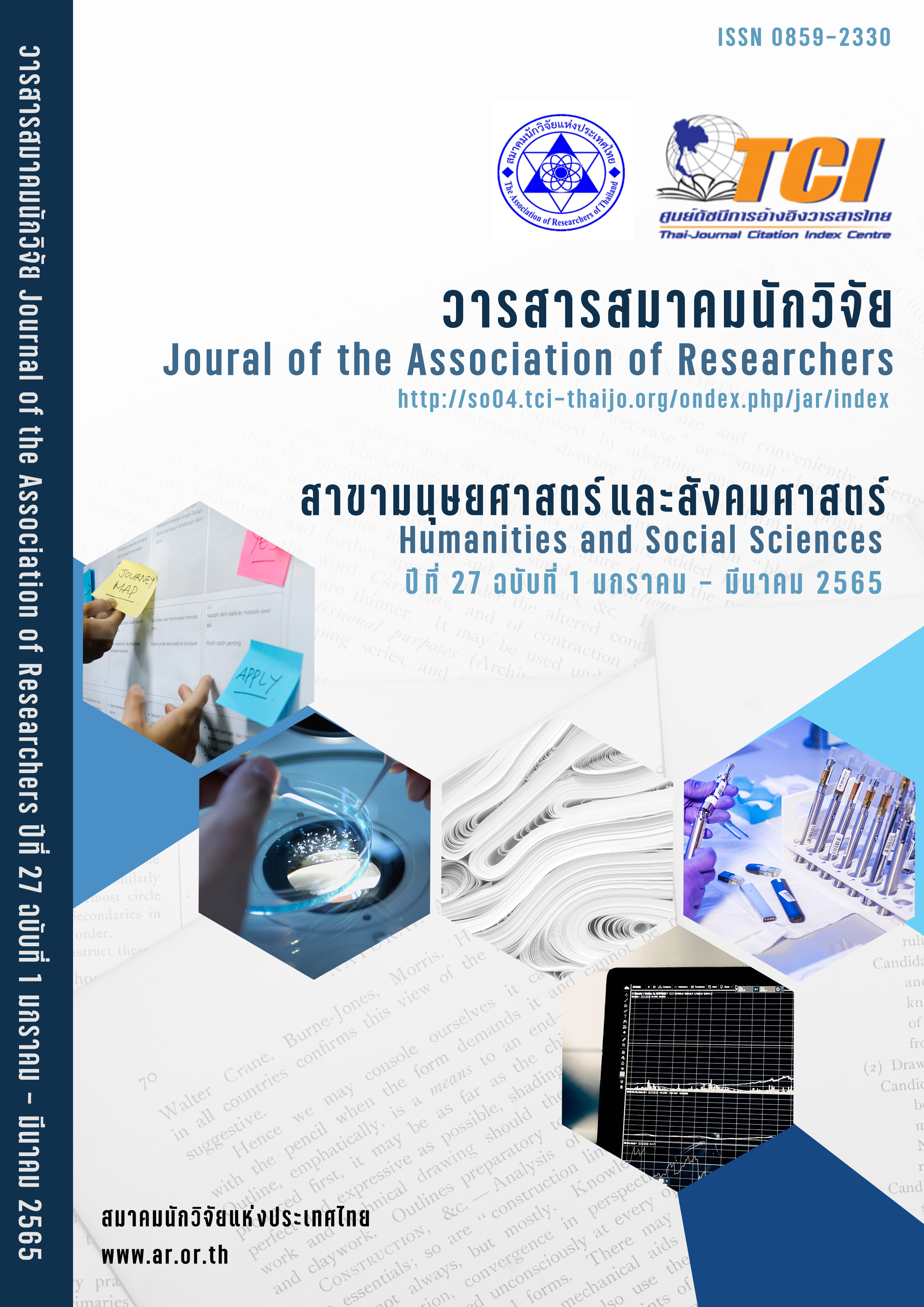Development of community enterprise Group management In Udonthani
Main Article Content
Abstract
The objective of this research was to strengthen the community production’s capability by not less than 10% and to assess the encountered problems as well as provide in-depth consultation by questioning, observing, and recording employees-at-work’s’ data. Furthermore, the samples were interviewed in accordance with the 4M strategy in order to study, analyze, and improve the production process. The research was aimed to recommend, improve, and figure out the issues out of 2 groups namely 1) 1) Pla Ra Bong Tha Tum Community Enterprise and 2) Khaotan-Rice-Cracker Community Enterprise.
Research results
1) The abilities’ strengthening for community enterprise in production’s process, not less than 10 percent found its improvement towards procedures and positions of the operations was accorded to the objectives. For this reason, Pla Ra Bong Tha Tum together with Khaotan-Rice-Cracker Bai Fern Community Enterprise for the improvement process’ the result of the production and material flows was more than 10 percent for both groups. In the real process, the result was less than 10 percent which was not accorded to the objectives because each production’s procedure was standardized, less duration of material flows, and also, the positions were closed.
2) To assess problems and propose in-depth suggestions, the strengthening’s ability approach of community enterprise was defined. The study found the accorded recommendations to objectives had reduced tiredness as well as risks of accident. It assisted the attitudes of workers toward new procedures in more safety and pleasure.
Article Details

This work is licensed under a Creative Commons Attribution-NonCommercial-NoDerivatives 4.0 International License.
บทความที่ปรากฏในวารสารนี้ เป็นความรับผิดชอบของผู้เขียน ซึ่งสมาคมนักวิจัยไม่จำเป็นต้องเห็นด้วยเสมอไป การนำเสนอผลงานวิจัยและบทความในวารสารนี้ไปเผยแพร่สามารถกระทำได้ โดยระบุแหล่งอ้างอิงจาก "วารสารสมาคมนักวิจัย"
References
กรมควบคุมโรค กระทรวงสาธารณสุข. (2564). “จำนวนผู้ติดเชื้อโควิดในประเทศรายใหม่และสะสม. เมื่อ 17 เมษายน 2564.” https://ddc.moph.go.th/
ธงพล พรหมสาขา ณ สกลนคร, อุทิศ สังขรัตน์. (2556). “แนวทางการพัฒนาการดำเนินงานของวิสาหกิจชุมชนเขตลุ่มทะเลสาบสงขลา.” ภาควิชาสรัตถศึกษา คณะศิลปศาสตร์มหาวิทยาลัยสงขลานครินทร์.
พิมพ์พิสุทธิ์ อ้วนล้ำ, ชมพูนุท โมราชาติ, กัญญา จึงวิมุติพันธ์. (2017). “The Development of the Operational Capacity of the Non-Food Herbal One Tambon One Product (OTOP) Groups.” วารสาร มนุษยศาสตร์ และ สังคมศาสตร์ มหาวิทยาลัยอุบลราชธานี, 8 (2), 207-238.
ศักดิ์ดา ศิริภัทรโสภณ. (2563). “โรคระบาดไวรัสโคโรนาสายพันธุ์ใหม่ (COVID-19): ผลกระทบต่อวิสาหกิจขนาดกลางและขนาดย่อมของไทยและกลยุทธ์ในการฟื้นฟูกิจการ.” วารสารสมาคมนักวิจัย, 25 (2), 10-30.
Abubakar, A. (2020). “Coronavirus (COVID-19): Effect and survival strategy for businesses.” Journal of Economics and Business, 3 (2), 661-671.
Authayarat, W., Ariyajunya, B. (2021). “การประยุกต์วิธีคิดเชิงออกแบบบริการร่วมกับวิธีการศึกษางาน เพื่อ ปรับปรุงกระบวนการผลิต ระดับวิสาหกิจชุมชน กรณีศึกษากระบวนการผลิตขนมธัชพืชอัดแท่ง.” Naresuan University Engineering Journal, 16 (1), 39-52.
Brown, T. (2009). “Change by design: how design thinking transforms organizations and inspires innovation.” Harper Collins Publishers.
Department of Disease Control, Ministry of Public Health. (2018). “The number of new and cumulative domestic COVID-9 cases.” Retrieved 17 April 2021, https://ddc.moph.go.th/
Kanjanapanyakom, R. (2009). “Industrial Work Study.” Top.
Udomthanasansakul, P. (2021). “อิทธิพลของนโยบายรัฐและการจัดการภาวะวิกฤตที่มีต่อกลยุทธ์การดำเนินงาน ของวิสาหกิจ ขนาดกลาง และ ขนาดย่อม ในจังหวัดเชียงใหม่ในช่วงวิกฤตของโรคระบาดโควิด-19.” Journal of Accountancy and Management, 13(2), 76-93.


